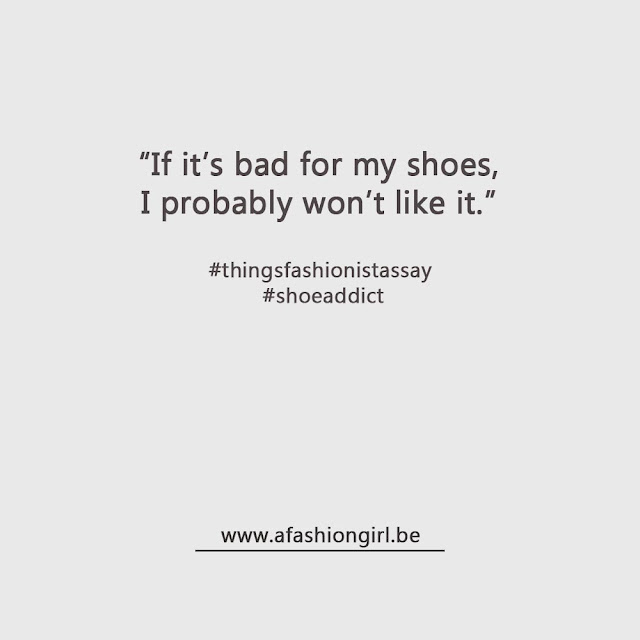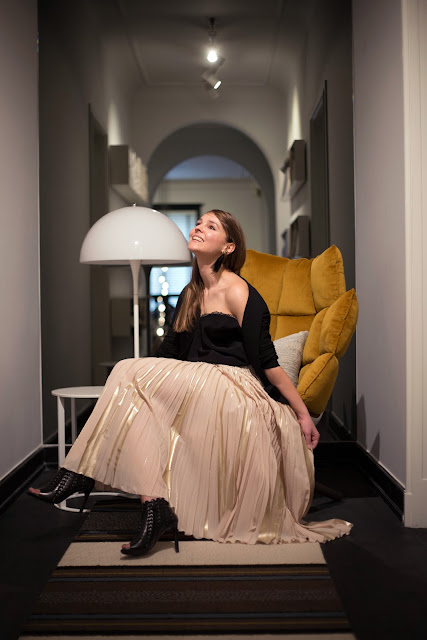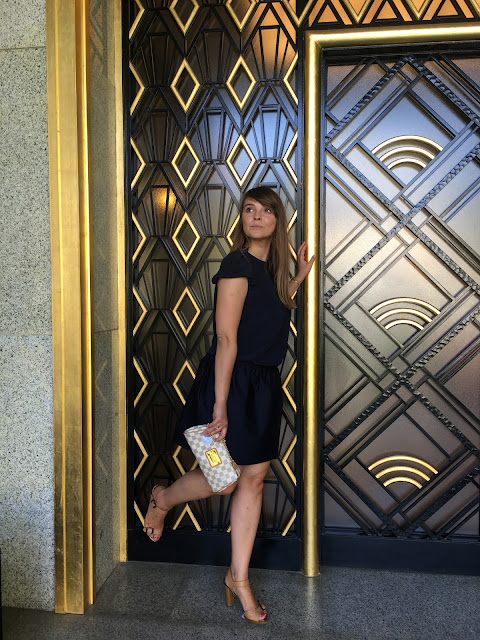Five days of feathers - 1. Exhibition 'Birds of Paradise. Plumes and Feathers in Fashion'
 |
| Picture: Alexander McQueen, Fall 2009, Photo: François Nars, Graphic Design: Paul Boudens |
De nieuwe expo in het Antwerpse modemuseum (MoMu) draagt de naam 'Birds of Paradise. Pluimen en veren in de mode'. Directeur van het MoMu Kaat en conservator Karen gaven vlak voor de officiële opening een korte inleiding bij de tentoonstelling aan de pers. Beide dames waren gekleed in sober zwart, altijd fashionable natuurlijk. Op het eerste zicht lijkt dit in fel contrast te staan met een tentoonstelling die focust op pluimen en veren. Bij deze woorden verschijnen immers meteen beelden van veelkleurige boa's en showgirls in onze gedachten. Daar brengt deze expo echter niets van. Integendeel, kunstig verwerkte veren in couture-creaties van de afgelopen 200 jaar, dat is wat de bezoekers te zien krijgen. Imposante creaties van Alexander McQueen staan naast immer elegante Chanel-jurken, uitbundige Mugler-fantasieën, moderne Louis Vuitton-jassen, sobere Ann Demeulemeester items en stukken uit de collectie van wijlen koningin Astrid. Na het zien van al dat moois, hoop ik stiekem dat veren ook weer meer in de prêt-à-porter hun opwachting zullen maken. Misschien wishful thinking gezien de vakkennis en het handwerk die met dit bijzonder materiaal gepaard gaan. Maar een meisje mag altijd hopen. Lees verder voor foto's, 14 weetjes over de expo en praktische info.
 |
| © a fashion girl *** Chanel chic met veren. *** Chanel chic with feathers. |
 | |
| © a fashion girl *** Thierry Mugler en Jean Paul Gaultier extravagantie. *** Extravagance by Thierry Mugler and Jean Paul Gaultier. |
The new exhibition at the Antwerp fashion museum (MoMu) is named 'Birds of Paradise. Plumes and Feathers in Fashion'. Director of the museum Kaat and curator Karen gave a short introduction right before the official opening. Both ladies were dressed in sober black - always fashionalbe of course. At first glance this seems contradictory to the exhibition that focuses on plumes and feathers. When hearing this words images of boas and showgirls come to mind. But you won't find those in this exhibition. Quite the opposite, artfully incorporated feathers in couture creations from the past 200 years, that is what visitors can discover. Impressive creations from Alexander McQueen are placed next to immer elegant Chanel dresses, exuberant Mugler fantasies, contemporary LouisVuitton coats, sober Ann Demeulemeester pieces and items that once belonged to the late Queen Astrid. After seeing all those magnificent pieces, I secretly hope that feathers will make more of a reappearance in today's prêt-a-porter. Maybe this is wishful thinking once you realize how much technical knowledge is needed and how much is handmade when using this specific material. But a girl can dream. Read more for pictures, 14 facts about the exhibition and practical information.
14 weetjes over de expo
- Veren werden vroeger gebruikt als alternatief voor bont, omdat ze goedkoper waren.
- De Belgische koningin Astrid gebruikte in de jaren '20 een opvallende roze verenwaaier.
- Yves Saint Laurent gebruikte in de jaren '60 veren om de emancipatie van de vrouw te vieren en haar als vrije vogel af te beelden, maar zijn visie was in 2001 compleet anders en de veren vormden toen eerder een pantser om de vrouw te beschermen en van haar een onaantastbare koningin te maken.
- Veren waaiers waren vroeger een statussymbool aan het hof.
- Het MoMu wijkt voor één keer af van zijn policy om zo weinig mogelijk achter glas te plaatsen. Reden is dat veren erg veel stof aantrekken en heel fragiel zijn. De stukken werden daarom in glazen kooien geplaatst, die heel toepasselijk aan een volière doen denken.
- Ann Demeulemeester - die veel veren in haar creaties gebruikt - leerde haar man kennen omdat ze werd aangetrokken door de duivenveren die hij als pochette in zijn jaszakje had zitten toen ze hem ontmoette.
- Er zijn meer dan 40 000 veren verwerkt in het grote kunstwerk van Kate MccGwire en het is in zes stukken vervoerd en ter plaatse terug afgewerkt.
- Veren worden meestal gelijmd op de kleding en niet geborduurd.
- Veren kunnen er soms uitzien als ander materiaal. Dat blijkt duidelijk uit onder andere de jas van Marlene Dietrich. Deze jas uit zwanendons - die eerder uit hermelijn lijkt gemaakt - is het pronkstuk van de tentoonstelling. In in tegenstelling tot hermelijn, is deze jas 'veder'licht.
- Een van de laatste verenateliers voor haute couture is Maison Lemarié in Parijs.
- Tegenwoordig worden er geen exotische veren meer gebruikt. Kippen- en hanenveren worden bewerkt en kunnen er heel sober of net heel exotisch uitzien.
- Ann Demeulemeester over veren: "Waarom zou ik een veer namaken? Een veer is perfect."
- Stephen Jones over zijn extravagante hoofddeksel met pauwenveren voor Louis Vuitton:"Je draagt het wanneer je op je motor zit en je een leren jasje aanhebt."
- Er is niet echt een verschil tussen pluimen en veren. Gevoelsmatig gebruiken we pluimen eerder voor donsachtige pluizige veren en veren voor de stijvere varianten.
Dus als je camelia's gemaakt van veren wil zien, een bontjas die er geen is, witte en zwarte couture-zwanen ....rep je dan naar het MoMu en wees verwonderd.
 |
| © a fashion girl |
 | |||
| © a fashion girl |
 |
| © a fashion girl |
 |
| © a fashion girl |
 |
| © a fashion girl |
14 facts about the exhibition
- In the past feathers were used as an alternative for fur because they were cheaper.
- In the 1920's Belgian Queen Astrid used a hot pink feather fan.
- Yves Saint Laurent used feathers in the 1960's to celebrate the emancipation of women and to portray women as 'free as a bird'. In 2001 his view had changed completely and in his creations the feathers were more like an armor protecting the woman and transforming her into an unreachable queen.
- Feather fans used to be a status symbol at the court.
- For once the MoMu deviates from its policy to place the pieces as little as possible behind glass. The reason being that feathers attract lots of dust and are very fragile. For this exhibition the clothes are placed in glass cages that recall aviaries.
- Ann Demeulemeester - who uses a lot of feathers in her creations - got to know her husband because she was attracted to the pigeon feathers he was wearing in his coat pocket instead of a pocket square when she met him.
- There are more than 40 000 feathers in the big art installation by Kate MccGwire. It was transported in six pieces and put together again in the fashion museum.
- Usually feathers are glued to the fabric and not sewed onto it.
- Feathers can take on the appearance of other material. That is clearly the case with the coat in swan's down of Marlene Dietrich, that appears to be made of ermine fur. As opposed to a fur coat this one is light as a 'feather'.
- One of the last real ateliers of feather workers is Maison Lemarié in Paris.
- Nowadays feathers of exotic birds aren't used anymore. Feathers of chickens and roosters are treated to take on any appearance, from sober to exotic.
- Ann Demeulemeester about feathers:"Why would I want to forge a feather? A feather is perfect."
- Stephen Jones about his extravagant headpiece with peacock feathers for Louis Vuitton:"It is meant for when you are riding your motorbike and wearing your leather jacket."
- There isn't a real difference between plumes and feathers. We use the word plumes more when we talk about fluffy feathers and feathers to talk about the other types.
So if you want to see camellias made out of feathers, a fur coat that is actually something else, black and white couture swans...hury to the Antwerp fashion museum and be amazed.
 |
| © a fashion girl |
Expo 'Birds of Paradise. Plumes and Feathers in Fashion'
- MoMu - ModeMuseum Provincie Antwerpen, Nationalestraat 28, 2000 Antwerpen
- 20 maart 2014 > 24 augustus 2014 / March 20th 2014 - August 24th 2014
- dinsdag tot zondag van 10 tot 18 uur (ticketverkoop tot 17.30 uur) / from Tuesday till Sunday from 10 am to 6 pm (Tickets are sold until 5.30 pm.)
- www.momu.be
 |
| © a fashion girl |
 |
| © a fashion girl |
 |
| © a fashion girl |







Reacties
Een reactie posten